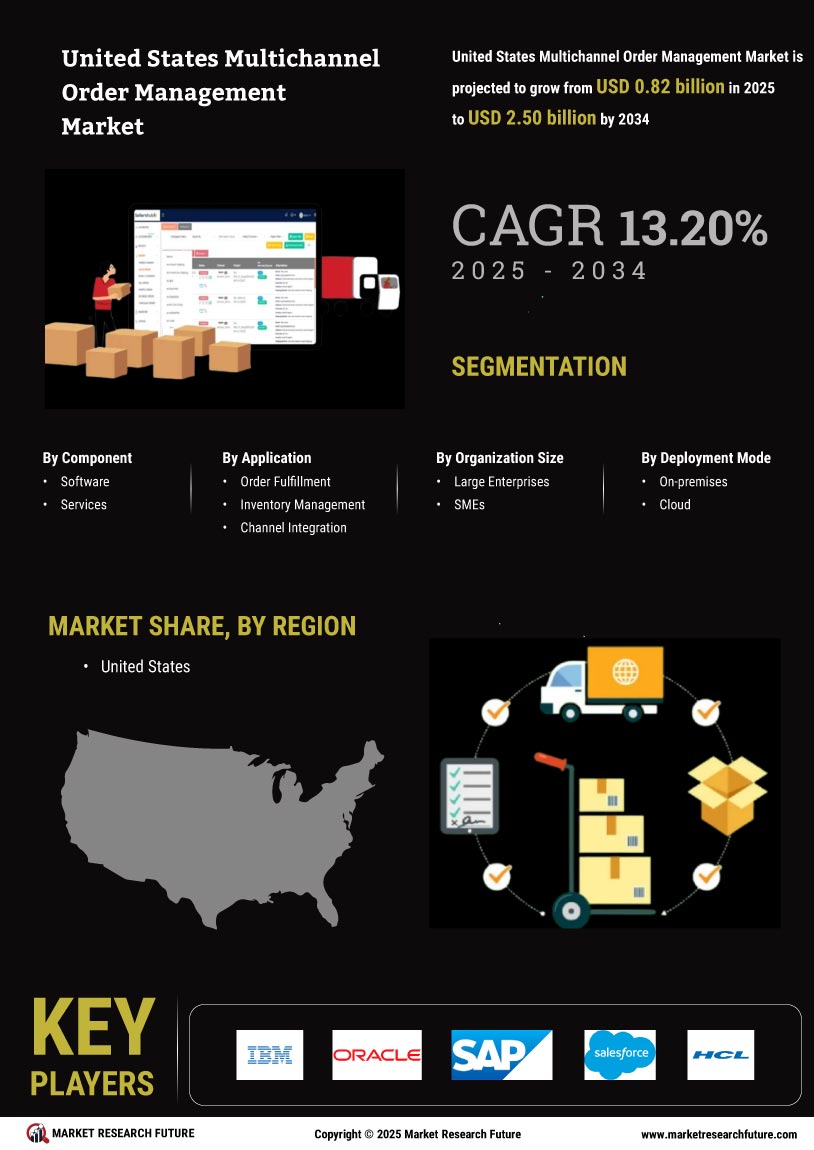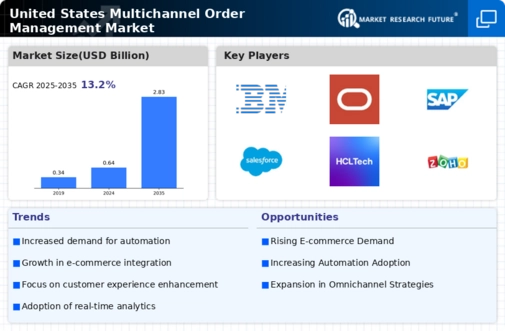Rising E-commerce Demand
The United States Multichannel Order Management Market is experiencing a surge in demand driven by the rapid growth of e-commerce. As consumers increasingly prefer online shopping, businesses are compelled to adopt multichannel strategies to meet customer expectations. In 2025, e-commerce sales in the United States are projected to reach approximately 1 trillion USD, indicating a significant opportunity for order management solutions. This trend necessitates efficient order processing and fulfillment systems, which are integral to multichannel order management. Companies that leverage these systems can enhance their operational efficiency and customer satisfaction, thereby gaining a competitive edge in the market.
Regulatory Compliance and Data Security
The United States Multichannel Order Management Market is increasingly influenced by regulatory compliance and data security concerns. As businesses handle vast amounts of customer data, they must adhere to stringent regulations to protect this information. The rise in data breaches has heightened awareness around data security, prompting companies to invest in secure order management systems. In 2025, the market for cybersecurity solutions in the United States is anticipated to reach 300 billion USD, indicating a growing focus on safeguarding customer data. This trend is likely to drive the adoption of multichannel order management solutions that prioritize compliance and security.
Increased Focus on Supply Chain Efficiency
The United States Multichannel Order Management Market is influenced by the growing emphasis on supply chain efficiency. Businesses are recognizing the importance of streamlined operations to reduce costs and improve service levels. In 2025, the logistics and supply chain management market in the United States is expected to exceed 1.5 trillion USD, highlighting the critical role of effective order management in this landscape. By implementing advanced order management systems, companies can optimize inventory levels, reduce lead times, and enhance overall supply chain performance. This focus on efficiency is likely to drive the adoption of multichannel order management solutions.
Consumer Expectations for Seamless Experiences
The United States Multichannel Order Management Market is driven by evolving consumer expectations for seamless shopping experiences. Today's consumers demand convenience, speed, and personalization across all channels. As a result, businesses are compelled to implement multichannel order management solutions that provide a unified view of inventory and orders. This shift is crucial for meeting customer demands and enhancing satisfaction. In 2025, studies suggest that 75% of consumers will expect a consistent experience across all platforms, underscoring the necessity for effective order management systems that can deliver on these expectations.
Technological Advancements in Order Management
The United States Multichannel Order Management Market is significantly shaped by technological advancements. Innovations such as artificial intelligence, machine learning, and automation are transforming how businesses manage orders across multiple channels. These technologies enable real-time data analysis, predictive analytics, and improved decision-making processes. As organizations increasingly adopt these technologies, the demand for sophisticated order management systems is expected to rise. In 2025, the market for AI in supply chain management is projected to reach 10 billion USD, indicating a robust growth trajectory that will likely benefit the multichannel order management sector.





































Leave a Comment